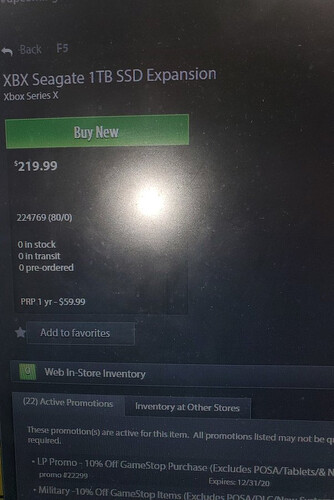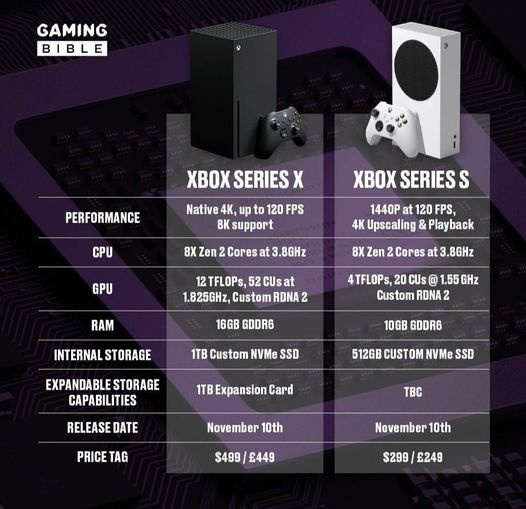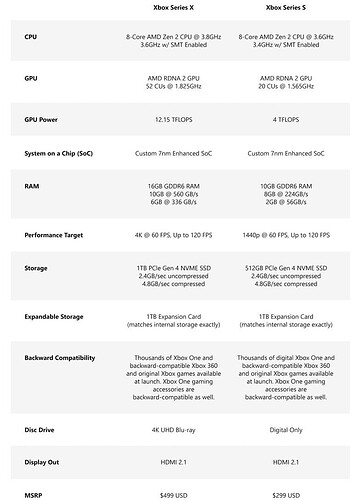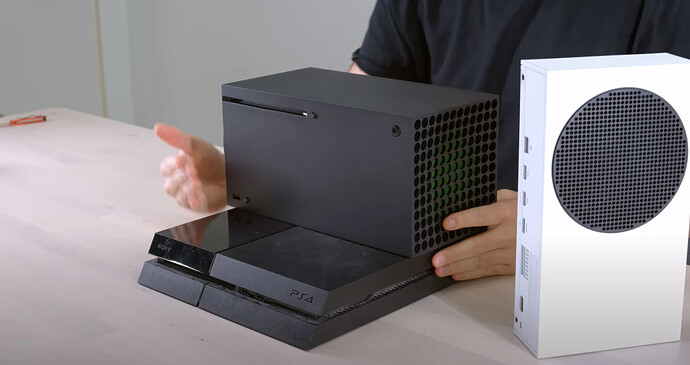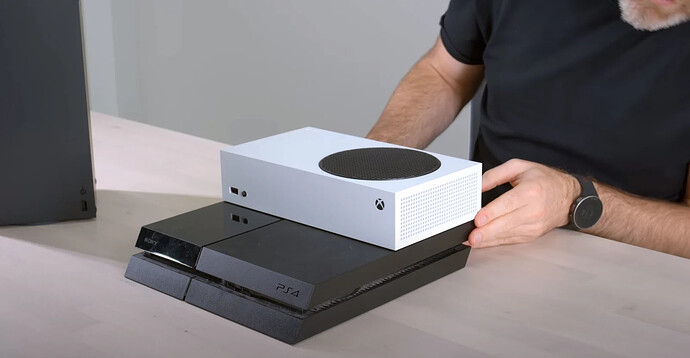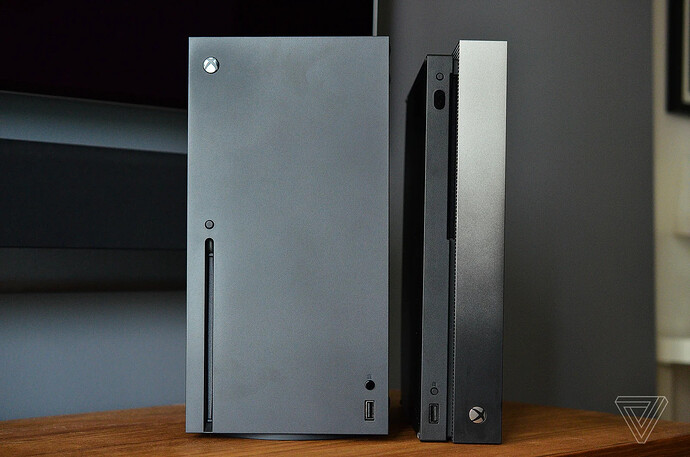Xbox Series S: the second cheapest next-gen console of all time?
Xbox Series S is undeniably a steal at its amazing $299/£249 price point, but if you run the numbers and see what old consoles actually cost, that price gets even more impressive. We did a little digging and revisited every major console launch of the last few decades, using an inflation calculator to work out how much each would cost in today’s money.
Amazingly, when looking through all of these adjusted prices, Xbox Series S comes remarkably close to being the cheapest ever next-gen console at launch. Only the Nintendo GameCube comes in cheaper, with its launch price of $199 equating to around $296 after factoring in nearly two decades’ worth of inflation.
Xbox Series X doesn’t fare quite so well here, but you probably wouldn’t expect the most powerful console ever released to undercut many of its forerunners when there’s so much cutting edge tech packed into it. Still, it does come in cheaper than almost a third of these older consoles after adjusting for inflation, which just goes to show how good a deal Microsoft’s super-console really is.
Who’s hungry for data? Good, because this buffet is fully stocked — let’s get stuck in! First up, let’s take a look at how Series X and Series S square up against the rest of the Xbox family.
Pitting the two new Xbox consoles against their older siblings is pretty straightforward, because Microsoft has only ever used the same two price points for generational Xbox launches. Well, sort of. For all of these entries, we’ve only picked the lowest priced option. Xbox 360, for instance, launched with two models (with and without a hard drive), with the cheaper Core unit, which shared the same $299 list price as Series S, and the HDD model original selling for $399. Adjust that for inflation and it works out around $538, meaning that the Series X with its 1TB SSD is actually a better value proposition than the 20GB 360 was back in the day. Crazy.
After accounting for inflation, Series S comes in cheaper than the whole lot, while Series X also manages to scrape in slightly lower than the two others that shared its launch MSRP (manufacturer’s suggested retail price), namely the original Xbox One and the more powerful Xbox One X. Only the latter really counts, mind, since that initial Xbox One price included a bundled Kinect, so it’s not the fairest of comparisons.
Still, Series S comes out of this as the cheapest Xbox ever, while Series X — which will be the most powerful console on the market come November 10th — turns out to be slightly more affordable than the current king of consoles, Xbox One X. Not a bad start. Next, let’s see how Sony’s consoles fare…
First things first, that PS5 price is obviously just a placeholder. Sony has yet to make an official announcement on the price of the hardware, but it’s realistic to expect it to be comparable to that of the Series X. Since the only difference between the digital edition and the ‘main’ console is the former’s lack of an optical drive, there’s no way there’ll be more than $50 or so between the prices of the two units, so Microsoft will certainly have the cheaper end of the next generation on lock with the Series S. Well, unless Sony has a secret third model up its sleeve to compete with it.
Looking at the historical data, Series S once again manages a clean sweep, coming in below the adjusted prices of every home PlayStation console. But why stop there? Throwing the portables into the mix as well makes for pretty interesting reading — both PSP and Vita launched at $249, but the seven-year gap between the two means there’s close to a decade’s worth of inflation to bump up that price for today’s market. Vita’s cost rises only slightly to $286, while the PSP gets bumped up to $336. Chalk up another point for Series S: a powerhouse next-gen console undercutting a handheld (even one as techically impressive as the PSP) is pretty bonkers stuff.
Series X being roughly comparable to most of the list is also a little surprising, and really drives home what a great deal it really is. The only real outlier on there is the PS3, but that was deemed pretty expensive at the time, especially the $599 ($783 with inflation) 60GB version. So much so, in fact, that it became a meme due to its steep cost and weak launch lineup. Even at that lofty price point, it’s reported that Sony was losing upwards of $200 per console sold, with sources citing production costs of over $800 per unit. Madness. Up next, some toys for children.
Joking aside, Nintendo has put out some amazing hardware over the years, especially after changing tack at the turn of the millennium to focus more on innovation than raw power. One console even had a handle. A handle! Wild. Then, the Wii, in spite of its risible name, changed the gaming landscape completely and forced every other platform holder to factor in motion controls more heavily (leading to PlayStation Move and Kinect). For all the creative tech involved, though, Nintendo’s family-friendly hardware has typically fallen at the lower end of the price range.
And there it is: the handled hardware hero that is the GameCube, the only console whose launch price comes in below that of the Series S even after adjusting for inflation. As you can see, all three of Nintendo’s previous consoles shared that same affordable $199 launch MSRP. But with each having an extra half-decade or so of inflation to factor in, the relative prices shoot up over $300 as you go further back and the Series S comes out on top once more. GameCube squeaks ahead by the narrowest of margins here — just three dollars — and even a single additional year’s worth of inflation would have been enough to push it over the $300 mark and make Series S the most affordable console launch ever.
It’s no great surprise that Series X doesn’t come close to a lot of these prices. As mentioned earlier, modern Nintendo consoles tend to be the weakest of their generation in terms of raw processing power, and that lack of bleeding edge components allows them to keep costs down. The same is especially true of its handhelds, and almost none of those even come close to the $300 mark even factoring in decades’ worth of inflation. The only exception is the 3DS, since it went against the usual ‘low-end’ grain for Nintendo and incorporated a fancy glasses-free 3D screen, driving launch MSRP up to $249 ($292 with inflation) — almost double the cost of its predecessor, the DS, and close to triple the price of the Game Boy Advance.
And where better to go after Nintendo than to its main Nineties rival, Sega?
That’s right, kids — the company that makes Sonic games used to make consoles, too! Darn good ones at that. Sega hasn’t put out a new console in over two decades so inflation really does a number on most of these prices. As a result, it’s another flawless round for Series S, with even the budget $199 price point of the lovely, lovely Dreamcast shooting up by just under 60% with inflation.
Looking at handhelds, the adjusted prices fall just either side of the $299 sweet spot of Series S. The Game Gear (originally $149, almost doubled to $288), despite being considered fairly expensive at the time — it was twice the price of the Game Boy due to its colour screen — still works out slightly cheaper. Meanwhile, the less well-known Nomad (a portable Genesis with an absolutely horrific screen) climbs from $180 to $311 after a quater-century of inflation, so guess what? Another W for Series S.
Once again, the cost of Series X comes in quite a bit higher than most even after converting to modern value, but once again, that’s not unexpected. Like its long-term rival, Sega wasn’t really known for using top-end components (up until the Dreamcast, anyway) in home hardware, and console gaming in those early generations was always a good way behind what you’d see in arcades or on home computers. Not that other companies weren’t offering high-end stuff, mind, so let’s take a look at a few of those to close this out.
You’d be forgiven for having never heard of this lot, since they never really threatened the mainstream, so let’s take a quick break for a history lesson to put these things in context. The Jaguar was bigged up as being the first 64-bit console, which would have meant it beat the N64 to the punch by three years if true. Unsurprisingly, it wasn’t — the Jaguar had a pair of 32-bit processors working in tandem, and Atari just decided to add the two numbers together to make it sound more impressive than it actually was. Which was ‘not very,’ and with minimal support, the worst controller of all time, and cartridge-based games heading into the CD-ROM era, it was quickly scuppered by the PlayStation.
3DO, meanwhile, launched at a similar time but was genuinely pretty impressive in its day. But between that astronomical MSRP, a lack of support, and the imminent arrival of better tech in the mainstream with PlayStation and Saturn, it too got buried. As for NeoGeo, the AES was basically a home version of SNK’s arcade machines, shipping with a pair of arcade stick controllers and running games on massive cartridges that were upwards of $200 each. Any guesses as to why this one didn’t take off? It remains popular with collectors to this day, even though prices are higher than ever. Like, I love Metal Slug and everything, but I don’t $1,400 love it.
After inflation, these prices are just crazy. When you think about how much top-end tech you’re getting in a mainstream commerical box with the Series X, looking at figures like these just makes you feel sorry for the gamers of yesteryear. Can you imagine forking out the equivalent of $1,000+ for an undersupported console with slightly above-par specs? Series X presents quite the opposite, and this last set of console comparisons really puts that in perspective.
If you didn’t see what was so impressive about Microsoft’s pricing with its two new consoles before, hopefully you do now. Series S represents near unprecedented value for money in the hardware market, while Series X offers actually unprecedented tech in a console. Which will you be picking up? Hit the comments section below and let us know!
Xbox Series X and Xbox Series S will both launch on November 10th, with pre-orders opening on September 22nd.
(@IdleSloth84) September
